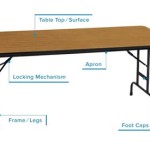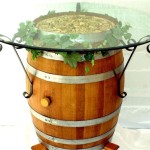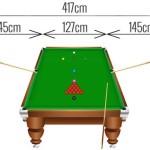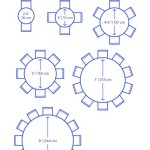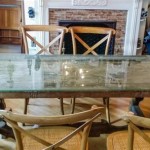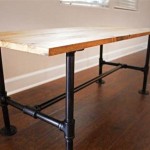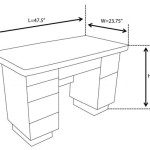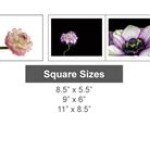What To Put Under Glass On Table: Elevating Aesthetics and Protecting Surfaces
Placing a glass top on a table offers a dual benefit: it provides a protective barrier against scratches, spills, and general wear and tear, while simultaneously enhancing the table's aesthetic appeal. The clear surface allows the beauty of the table's base to shine through, whether it's crafted from intricately carved wood, sleek metal, or a modern composite material. However, simply placing the glass directly on the table surface can sometimes appear unfinished or even lead to scratches on both the table and the glass itself due to friction. Therefore, selecting an appropriate material to place *under* the glass is crucial. The choice of what to put under the glass on a table impacts not only the visual appeal but also the functionality and longevity of both the table and the glass top.
The selection process should consider several factors, including the table's existing design, the overall style of the room, the desired level of protection, and the intended use of the table. A formal dining table, for example, might benefit from a more elegant and refined underlay, while a casual coffee table could accommodate a more relaxed and practical option. Likewise, a table frequently used for crafts or hobbies might require a more durable and protective layer than one primarily used for decorative purposes. This article will explore various options for what to place under a glass tabletop, providing guidance on choosing the ideal material to complement your specific needs and preferences.
Enhancing Aesthetics: Decorative Options
Beyond the practical aspects of protecting the table surface, placing something visually appealing under the glass can significantly enhance the aesthetic impact of the furniture piece. This opens up a wide range of possibilities, allowing for personalization and creative expression. The chosen material can serve as a subtle accent or a bold statement, depending on the desired effect.
Fabric is a versatile option that offers a variety of textures, colors, and patterns. A simple linen cloth can impart a clean and understated elegance, while a patterned silk scarf can add a touch of vibrancy and visual interest. The fabric should be carefully chosen to complement the table's design and the surrounding decor. Consider using remnants of vintage fabrics or even creating a custom-designed piece to further personalize the look. When using fabric, it's important to ensure it lies flat and is free of wrinkles or creases, as these will be visible through the glass. Heavier fabrics like felt or velvet can also provide a cushioning effect, further protecting the table surface.
Another visually striking option is to use photographs or artwork. Creating a collage of personal photos or displaying a favorite print can transform a simple table into a personalized art piece. This is particularly effective for coffee tables or side tables where the glass surface provides a showcase for cherished memories or artistic expressions. When using photos or artwork, ensure they are properly protected from moisture and fading. Consider laminating them or placing them in archival-quality sleeves before placing them under the glass. This will help preserve their condition and prevent them from deteriorating over time.
Natural elements can also create a unique and visually appealing underlay. Dried flowers, leaves, or shells can be arranged to create a natural and organic aesthetic. These elements can be particularly effective for tables with a rustic or bohemian style. When using natural elements, ensure they are completely dry and free of debris. Consider sealing them with a clear acrylic spray to prevent them from crumbling or attracting pests. An arrangement of pebbles or stones can also provide a textural and visually interesting base. These elements are particularly well-suited for outdoor tables or those with a coastal-inspired design.
Prioritizing Protection: Functional Underlays
While aesthetics are important, the primary function of placing something under the glass is often to protect the underlying table surface. This is particularly crucial for antique or valuable tables that are susceptible to scratches, dents, and spills. Selecting a protective underlay can significantly extend the life of the table and maintain its pristine condition.
Felt is a popular choice for providing a protective barrier. Its soft and cushioning texture prevents the glass from directly contacting the table surface, reducing the risk of scratches and scuffs. Felt is available in a variety of thicknesses and colors, allowing you to choose an option that best suits your needs and preferences. It's important to select a high-quality felt that is dense and durable, as thinner felts may compress over time and lose their protective properties. Self-adhesive felt pads can also be applied to the corners of the glass to further prevent scratching and slippage. These pads are particularly useful for tables that are frequently moved or used for activities that might cause the glass to shift.
Cork is another excellent option for providing both protection and cushioning. Its natural resilience absorbs impact and prevents the glass from directly contacting the table surface. Cork also has the added benefit of being water-resistant, making it a good choice for tables that are prone to spills. Cork pads or sheets can be cut to size and placed directly under the glass. Consider using a thicker cork for added protection, especially if the table is used for heavy items or activities that might cause impact. Cork is also a sustainable and eco-friendly material, making it a responsible choice for environmentally conscious consumers.
Rubber bumpers or spacers are perhaps the most minimal and practical solution. These small, discrete pads are typically placed at the corners of the glass and serve to create a slight gap between the glass and the table surface. This gap prevents the glass from directly contacting the table, eliminating the risk of scratches and scuffs. Rubber bumpers are available in a variety of sizes and shapes, allowing you to choose an option that is virtually invisible. They are also extremely easy to install and remove, making them a convenient choice for tables that are frequently rearranged or cleaned. While rubber bumpers provide excellent protection, they do not offer the same aesthetic enhancement as other underlay options.
Addressing Specific Needs: Tailored Solutions
The ideal choice for what to place under a glass tabletop often depends on the specific needs and circumstances of the user. Factors such as the table's location, intended use, and existing design can all influence the selection process. By considering these factors, you can ensure that you choose an underlay that provides the optimal balance of protection, aesthetics, and functionality.
For outdoor tables, it's crucial to choose a material that is weather-resistant and durable. Outdoor fabrics designed to withstand sun, rain, and humidity are ideal choices. These fabrics are typically made from synthetic materials such as acrylic or polyester and are treated to resist fading, mildew, and water damage. A simple, solid-colored outdoor fabric can provide a clean and understated look, while a patterned fabric can add a touch of personality to the outdoor space. Consider using a heavier fabric for added protection against wind and debris. Alternatively, a sheet of acrylic or polycarbonate can provide a waterproof barrier and protect the table from the elements. These materials are also resistant to scratches and impact, making them a durable choice for outdoor use.
For tables used for crafts or hobbies, a durable and easy-to-clean underlay is essential. A sheet of clear vinyl or plastic can provide a protective barrier against spills, paint splatters, and other messes. These materials are also resistant to scratches and can be easily wiped clean with a damp cloth. Consider using a thicker vinyl or plastic for added protection, especially if the table is used for activities that might involve sharp objects or heavy tools. Alternatively, a craft mat can provide a dedicated workspace and protect the table from damage. Craft mats are typically made from self-healing materials that resist cuts and scratches, making them a durable and long-lasting choice.
For tables with intricate or delicate bases, it's crucial to choose an underlay that will not scratch or damage the underlying surface. A soft felt or velvet lining can provide a protective barrier and prevent the glass from directly contacting the table. Ensure that the lining is free of any abrasive materials or sharp edges that could damage the table's finish. Consider using a non-slip underlay to prevent the glass from shifting and potentially damaging the table. Non-slip underlays are typically made from rubber or silicone and provide a secure grip between the glass and the table surface. For antique or valuable tables, it's always recommended to consult with a professional furniture restorer before placing anything under the glass. They can provide expert advice on choosing the appropriate materials and techniques to protect the table's integrity.

The Clutter Buster Seeing Double Glass Table Decor Old Country Houses N Home

Cool Coffee Table 25 Ideas For A Seriously Creative And Fresh Living Room

Diy Table Diary Of A Mad Crafter

Storage Space Under The Coffee Table 36 Ideas Digsdigs

Storage Space Under The Coffee Table 36 Ideas Digsdigs

Storage Space Under The Coffee Table 36 Ideas Digsdigs

Storage Space Under The Coffee Table 36 Ideas Digsdigs

Classic Home Decor Ideas Under 50

Diy Glass Top Table

Storage Space Under The Coffee Table 36 Ideas Digsdigs

